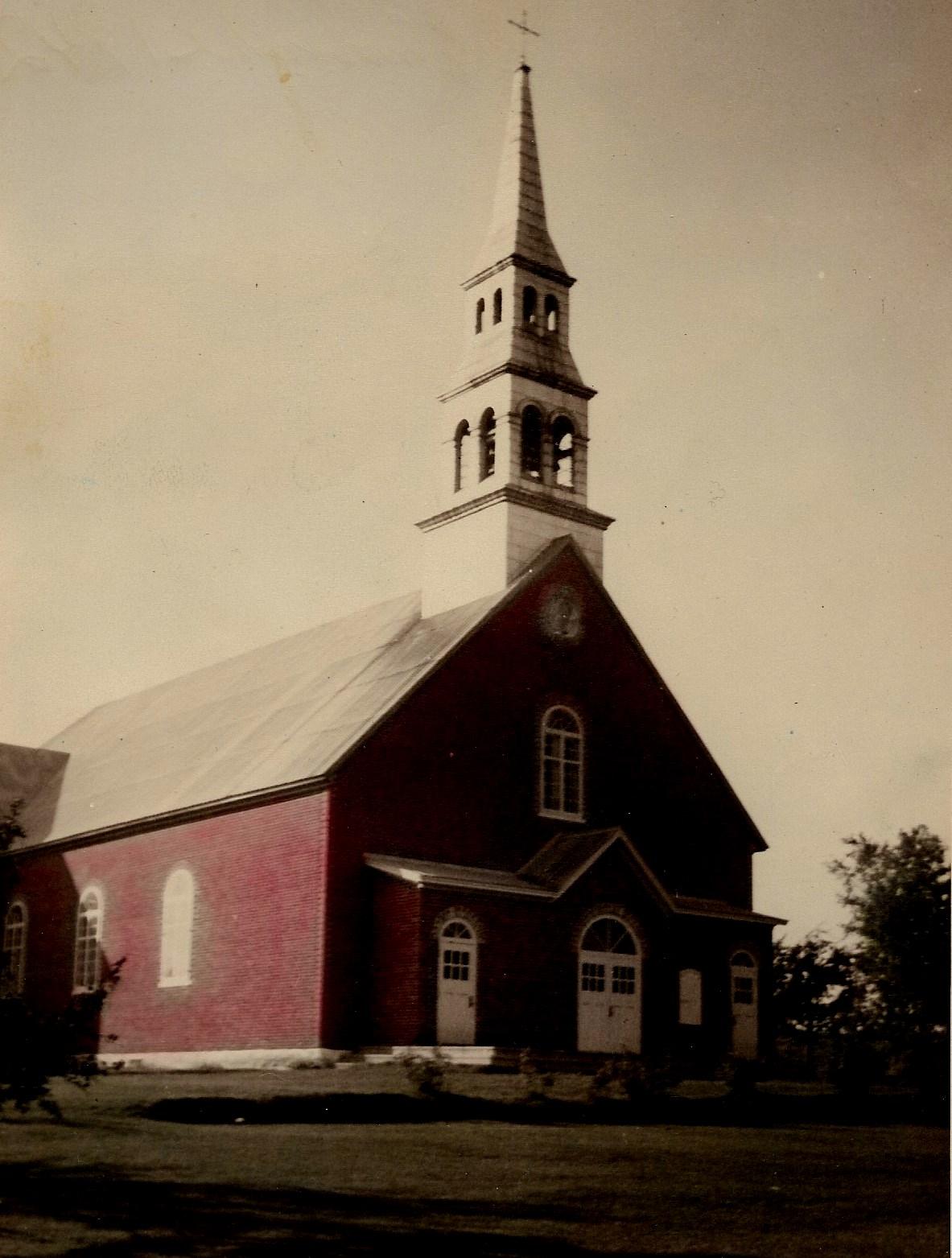







Way back when is the SaintLazare historical society’s historical magazine published 3 times a year, in January, May and in September. The content of this publication may be reproduced with acknowledgment of the source on the express condition of having obtained prior permission from the Saint-Lazare historical society.
Publisher: Paul Lavigne
Lifetime membership of the Saint-Lazare historical society is totally free. By becoming a lifetime member, you will receive the electronic link to our magazine 3 times a year and you will benefit from preferential rates for our events.
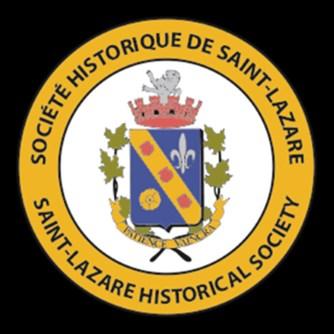
You can find the membership form on our website www.shsl.ca under the heading Becoming a member.
The rates for becoming a corporate or institutional member of the Saint-Lazare historical society are as follows:
GOLD level member (1/4 page publicity): $150.00 per year
SILVER level member (1/8 page publicity): $100.00 per year
BRONZE level member (1/16 page publicity): $50.00 per year
To become a corporate or institutional member, please send an Email at info@shsl.ca and we will gladly inform you about all the other advantages.

The Saint-Lazare Airport, formerly known as Cooper Aviation, has been in operation in the downtown area of the municipality for more than 50 years.
Norman Cooper, a former pilot officer in the RCAF during the Second World War who luckily never saw the atrocities of the conflict, had never put aside his dream of flying. He and his brothers, Charlie and Jimmy, owned a Ford dealership in Sainte-Anne-de-Bellevue and later in Baie-d'Urfé. Norman and his wife bought in 1956, a small farmhouse on chemin Sainte-Élisabeth to allow his daughters to indulge in their favorite pastime, horseback riding.
In 1962, Norman acquired a farm on Chemin SainteAngélique and in 1967, he reacquired his private pilot's license, erected a grass landing strip, bought his first aircraft and Cooper aviation in Saint-Lazare was officially inaugurated.


After the sale of the family garage a few months later, he decided to build one on his land. Following an unfortunate event that destroyed the garage in June 1970, Norman rebuilt it and operated it as a hangar for the mechanical maintenance of aircraft.
The airport gained popularity in subsequent years and with the support of the Experimental Aircraft Association and the Flying Farmers, it became a favorite destination in the area.
For several years, an annual event attracted many pilots from Quebec and Ontario to Saint-Lazare. The famous Fly-In Breakfasts, a classic rendez-vous among the regional airports of Quebec, is a charitable activity, where the population is invited to enjoy a wonderful breakfast, served by an army of volunteers while admiring up-close the parked aircraft on the tarmac. Up to 800 meals could easily be served at such an event at Cooper Airport.

During the 2000s, the airport underwent a facelift with the addition of new hangars, the paving of the aircraft parking lot, the taxiway, and the main landing strip.
Curiously, the airfield has been the scene of several film productions over the years including the feature films The Spirit of Adventure: Night Flight with Trevor Howard (1979), No Good Deed with Samuel L. Jackson (2002) and Les Plouffe by Gilles Carle (1981). The airport was even used for the filming of a commercial by the Chevrolet Company when it launched the Chevrolet Impala and the new On Star service in 2017, which was first viewed during the Super Bowl that year.
Despite the death of Norman in 1996 and his wife Ethel in 2000, the airport continues its vocation under the guidance of his daughter Judy Cooper and her husband Jack Brown. Having experienced a slowdown in the 2010s, the airport today is booming, following the closure of Les Cèdres airport and the creation of a new flight school, Air Prestige, which offers flight lessons on Cessna 150 and 172 type aircraft.




 By Anick Chevrier
By Anick Chevrier
An idea submitted by Carole Marcoux, Saint-Lazare resident and president of the group Les Sages branchés, to build a rest area had aroused a lot of interest among the city and citizens. Creating a green space, inviting us to take a break and contemplating the beauty of our environment in the heart of our village echoed the wish of many and when the idea started to take form during the summer of 2022, little by little the rest area took shape. The magnificent landscaping made up of perennials, shrubs and hardy specimens, the construction of a pergola and the installation of benches creates a sublime space in the center of the village that invites us to not only look at it, but also to sit for a few moments of contemplation, relaxation, and exchanges with our fellow citizens.
To brighten up the rest area, a great idea was suggested: to create a work of mural art on the wall of Chez Maurice, visible from the rest area and the street.
A working committee was created and included people from various walks of life: Geneviève Lachance, mayor, Marc Tremblay, director of the Recreation Department, Alexandra Lemieux, director of the urban planning department, Gisèle Lapalme, renowned artist and citizen of SaintLazare, Carole Marcoux, president of Les Sages branchés, and Anick Chevrier, vice-president of the Saint-Lazare Historical Society.

It is in collaboration with the group of mural artists Mu Montreal that we carried out this large-scale but stimulating project! We were guided by Mrs. Julie Lambert, production manager at MU, to arrive at the final work. We studied and discovered various portfolios and artists and developed our vision and our intention behind the mural work to be integrated into the rest area and wanted an artwork that evoked the Saint-Lazare of yesterday and today. The committee chose mural artist Mélissa Del Pinto to complete the artwork.
Historical research and archival photos submitted by Anick Chevrier, and suggestions made by the committee as to the specificities that characterize Saint-Lazare were sent to the artist. Inspired by the notes and photos submitted, Mélissa Del Pinto offered us a sketch that charmed and enchanted the committee by giving us a general idea of what the mural would look like. Finally, it is a masterful work of unparalleled beauty that Mélissa produced in collaboration with three local artists from SaintLazare. The mural evokes three significant themes of our history: the train station, the agricultural exhibition and its popular horse shows as well as
the first village church which was destroyed following a fire in 1942. The white pines, the fields and the on the edge of the fleeting woods, the flora, the monarchs, the birds are evoked here with great beauty. All the brilliantly illustrated elements naturally bring out the link between the past and the present of our beautiful city.
Note that 3 artists from Saint-Lazare volunteered to lend a hand to the mural artist. The work of Mélissa Del Pinto marks the history of Saint-Lazare with this first realization of mural art in our city. The Chartrand family, owners of the bar Chez Maurice, agreed to have the work painted on the wall of their building and kept there for posterity.
Originally from Montreal, Melissa Del Pinto is known for her large format paintings of birds and her meticulously carved frames. The artist has exhibited and collaborated on numerous murals both in Canada and the United States. Prestigious institutions such as the Montreal Museum of Fine Arts and the Montreal Symphony Orchestra have commissioned works from her.
*We would like to thank Mu Montreal and its production manager, Julie Lambert, for allowing us to include the photo of the sketch of the mural as well as the brief biography of the artist Mélissa Del Pinto in our commemorative calendar.
A large part of the Chartrand family surrounded on the left by the artist Melissa del Pinto, on the right by committee members Geneviève Lachance, mayor, Anick Chevrier vice-president of the Saint-Lazare historical society and Gisèle Lapalme, artist.

A municipal resolution was passed on August 9, 2022, to name the rest area Place MauriceChartrand. The SLHS welcomed this initiative to pay tribute to this great entrepreneur (January 15, 1930 - September 8, 2021).
Mr. Chartrand fathered the Bar Chez Maurice, which has become a true institution, an entertainment benchmark in the region and far beyond.
Chez Maurice has been the place of gathering, entertainment, and socializing for many generations.
It is also to honor the contribution of Mr. Chartrand to the cultural, commercial and community life of Saint-Lazare that his name was given to the rest area.

This commemorative square is located on chemin Sainte-Angélique, in Saint-Lazare, in Montérégie. More specifically, it is located between Avenue Bédard and Rue Poirier. Its name recalls the memory of Maurice Chartrand (1930-2021), husband of Jeanne Turcotte (1928-2013). A businessman involved in his community; the latter participated in the influence of the city of Saint-Lazare.



He is notably the founder of the bar Chez Maurice, which is adjacent to the commemorative square. This business, first known as Hôtel Lavigne, had been acquired by his father, Roméo Chartrand (1900-1969), in 1938. Succeeding his father in 1949, Maurice Chartrand transformed the establishment into a general store, hotel, restaurant-bar and tavern.







At the beginning of the 1900s, agricultural tools were not as modern and comfortable (steel wheels and seats…) as those of today. Above, we can see a haymaking instrument whose function was to turn the hay to help it dry. The concept was to collect enough hay to fill it, to operate a lever which raised and then emptied the rake.

This Cockshutt hay rake was pulled by a horse at the time. We can see that it has since been transformed to be pulled by a tractor. Farmers often modified their equipment, although it remained just as useful after all these years of service, to keep pace with changes, including the arrival of tractors. Today, what is called a side rake is used instead.

The Cockshutt brand of Cockshutt Farm Equipment Limited was highly sought after in the late 19th century all over the world. It s old for over 85 years

and was very popular in Canada and the US states. We owe this brand to the dream of James G. Cockshutt, son of a wealthy merchant of the time.
Below, we can see two agricultural implements (tools used to work the soil). These instruments were pulled by a horse to dig the earth. Rumor has it that objects just like these were used in the digging of the Soulanges canal. No need to tell you that after a day of work, the operator did not need to go to the gym or count sheep to fall asleep.
The agricultural tools presented today are all originally from Saint-Lazare. They belonged to Jacques Rozon, father of Gérard Rozon of chemin SaintLouis and they were used for the cultivation of our soils in the early 1900s. The rake was purchased by the Saint-Lazare historical society and donated to the city of Saint-Lazare where it will be exhibited in the spring somewhere in the city. My sister and I are proud to have bought the other instruments to preserve our history and our heritage.

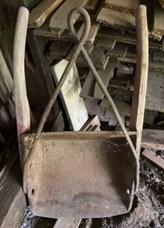
Here is another tillage implement called a weeder. This was used to dig out the earth, more precisely to remove weeds between the rows of crops. As you can see in the center, there is an arm that is used to widen or narrow everything according to the width of the crop rows. It stirs up very fond memories for me since my maternal grandfather owned one like it that he had modified to be pulled by his tractor. I remember driving the tractor while he maneuvered the weeder.









The Saint-Lazare historical society’s third exhibition soon to be presented in the glass cabinet located in the lobby of the city’s Town Hall is themed: the schools of Saint-Lazare. If you pass by the Town Hall, stop to look and see the artefacts and photos that are on display. We’d like to thank everyone who have donated or loaned archives, photos and memories to us in order to share them and make them known to as many people as possible!



The last exhibition focused on our great veterans who took part in one or more of the major world conflicts. This showcase, set up as part of the commemorative event held in November 2021 to honor them, had been developed to support the inauguration of the memorial erected in their honor in the lobby of City Hall.
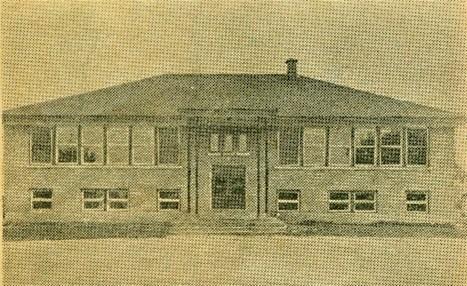
 By Anick Chevrier
By Anick Chevrier
The Quebec dictionary Usito gives the word pépine an unknown origin and dates it back to 1974, in a glossary of words found in Beauce by language teacher Maurice Lorent. The glossary in question quotes an ad from the newspaper L'Éclaireur-Progrès and indicates, without however supporting the assertion, that the word pépine comes from piping, the English equivalent. This popular etymology is relayed by other sources, including the dictionary of linguist Lionel Meney. This one defines piping as the art of installing pipes. This source can also be found in the Antidote correction software since 2006. An in-depth analysis of the main reference sources available allows us to find a pépine statement slightly earlier than that of Lorent. The word has indeed been the subject of metalinguistic observations since 1966 in the bulletin of the Académie canadienne-française, which also presents a proposed etymology:

To dig the trenches in which passes pipelines (oil pipelines and gas pipelines), we use an excavator that the workers have baptized here pépine. The exact name of the machine being unknown to them, they have found nothing better than to name it according to the work for which it is used. And that's how pipeline turned into pépine.
Subsequently, in the more specialized literature, some linguists furtively allude to the etymology of pépine, indicating that it would be an English brand name of a trademark or a loanword without providing any details or evidence.
A return to first-hand documentation, in particular the examination of old Quebec newspapers, makes it possible to elucidate the etymology of the word once and for all.
More recently, language columnist Jacques Lafontaine conducted his own survey on the Web and among the readership of the Journal de Montréal to find the origin of the word. Its conclusions effectively synthesize the hypotheses that circulate most frequently in the population.
What is the origin of the term pépine, which designates in everyday language a backhoe loader? Possibly English piping, according to an anonymous source on Wikipedia. Not sure. Some say that the word pépine comes from the English peep in. Here is the explanation: when the machine was digging a trench, the foreman asked one of the workers to check for the presence of obstacles by shouting Peep in! Others come rather to confirm the version according to which pépine comes from Pépin, surname of the manufacturer of this earth-moving machine.
The information in the available documentation contradicts each other in some respects. Indeed, pépine cannot come from both pipeline, piping, peep in, Pépin and the name of a mysterious English trademark. So where does it come from?
It turns out that the Québec word pépine comes from the name of the Pippin Construction Equipment, a former company based in Hartford, Vermont. The company specialized in the sale of mechanical shovels that could be added to tractors to transform them into backhoes. The name of the company comes from the surname of its founder, Marcus J. Pippin, as confirmed by the owner’s son in 2021.
Pippin began to advertise its machinery in Quebec in the early 1950s. The company carved out a certain place for itself in the then emerging market of hydraulic shovels. The first backhoe patent was filed in the United States on June 25, 1947, by Vaino J. Holopainen and came into effect on February 7, 1950. From that time on, Pippin excavators were fitted to tractors of brands such as Ferguson, Ford, International Harvester and John Deere.

In the mouths of French-speakers, the trade name Pippin was quickly adapted into a backhoe, as noted in a 1956 ad in which there was talk of a Ford Tractor with loader and hydraulic shovel of the Pépine brand. Under the effect of use, the proper name is transformed into a common name, and is used as a generic synonym of backhoe. This onomastism, a word derived from a proper name, appears recurrently in the documentation from the 1960s. We found it for the first time in a classified advertisement from La Presse in 1963, which mentions a tractor equipped with loader and backhoes.
The name pépine gradually took root in the informal and general use of Quebec French over the decades that followed. Over time, it came to refer not so much to the backhoes added to the tractors, but to the vehicles equipped with them. This small contribution on the word pépine shows how much the etymologies circulating in the documentation sometimes turn out to be misleading and perfectible.
We are pleased to present the 2023 edition of the commemorative calendar highlighting the 148 years of Saint-Lazare! Since 2020 we have been striving to share with everyone photos and images that relate parts of our history, our heritage, and our founding families. Here is the cover of the last 4 publications that we started producing in 2020. We aim to generate a commemorative calendar until 2025: the year that will mark the 150th anniversary of our beautiful town!
*Erratum: In the edition of the 2023 commemorative calendar, an error was noted on the page for the month of June in which we find the racehorse Pointer Grattan. Please note that the jockey is David Larocque and not Jean-Louis Larocque. We apologize for the mistake and thank you for




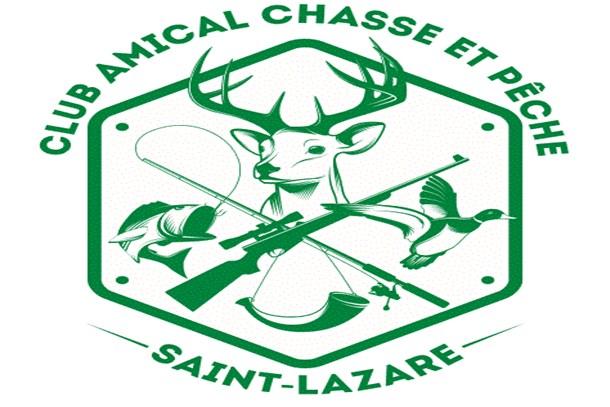
The brasserie concept was very popular in the 70s and 80s. Saint-Lazare was not left out, and many will remember, among others, the Brasserie Des Sables, located in the heart of the village of Saint-Lazare and its owner, Yves Beaulne. Few people will remember however, the Brasserie du Village which was located on the Côte SaintCharles, opposite the Mon Village restaurant (2760 Côte Saint-Charles).
This Pub bar was owned by Entreprises D.W.B., who also owned the Restaurant Mon Village located across the street. This brasserie had only a very short life though as it opened in the fall of 1978 and burned down on December 24, of the same year. At the time, the town of Saint-Lazare had no fire safety service, so it was the Vaudreuil firefighters, assisted by their colleagues from Hudson who arrived on site and found that the building was a total lost.


The land is still vacant today, the brewery having never been rebuilt. The Mon Village restaurant is still in the same place though, on the former Parsons family farm.
